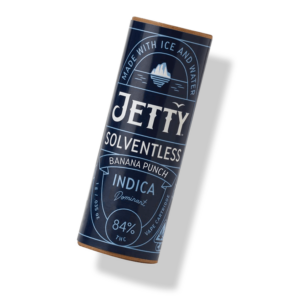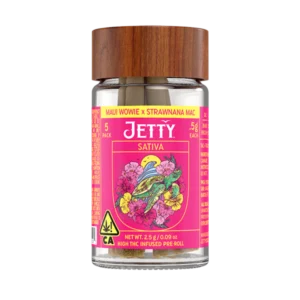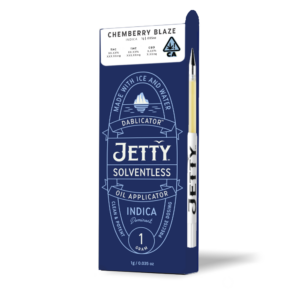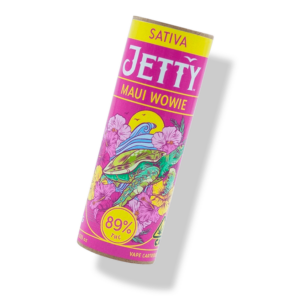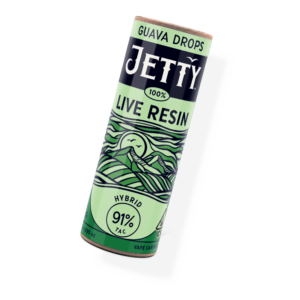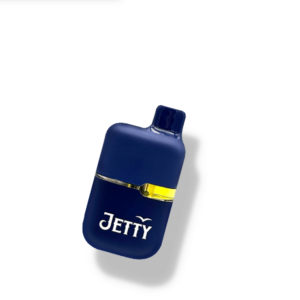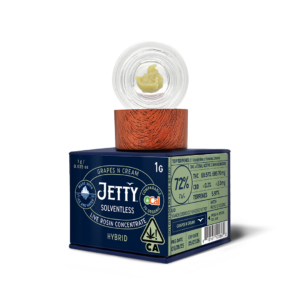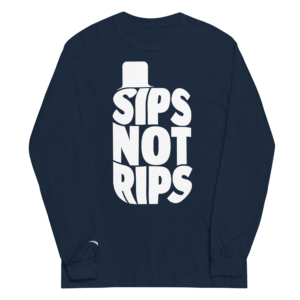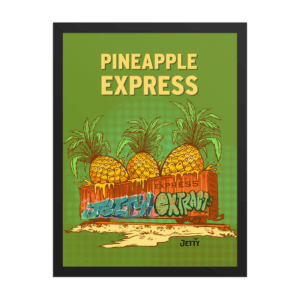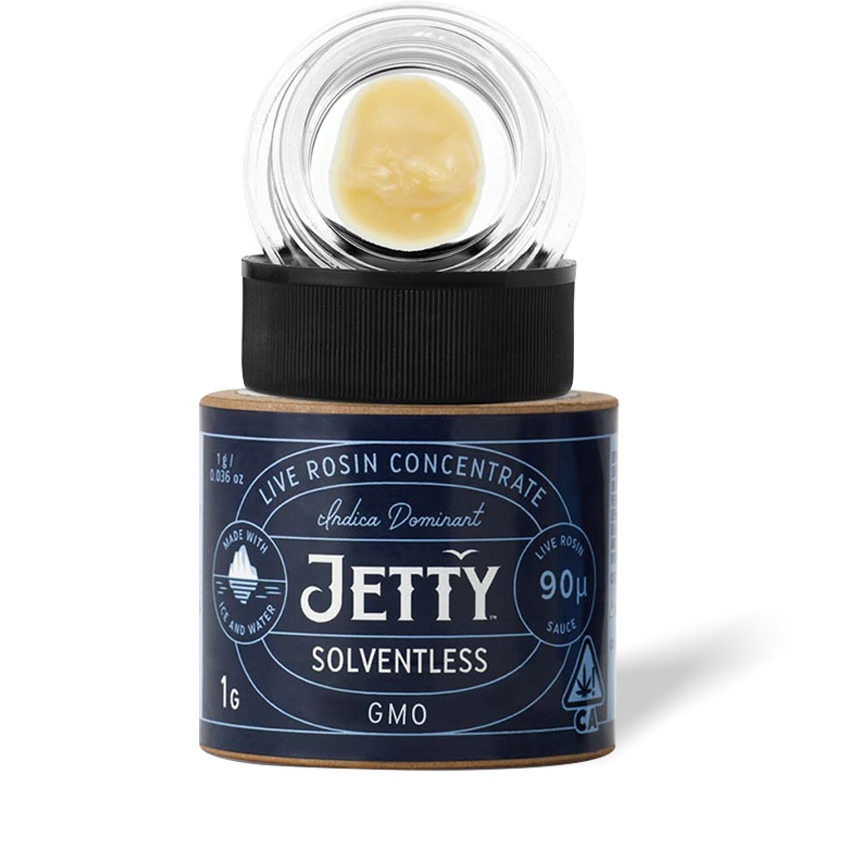Table of Contents
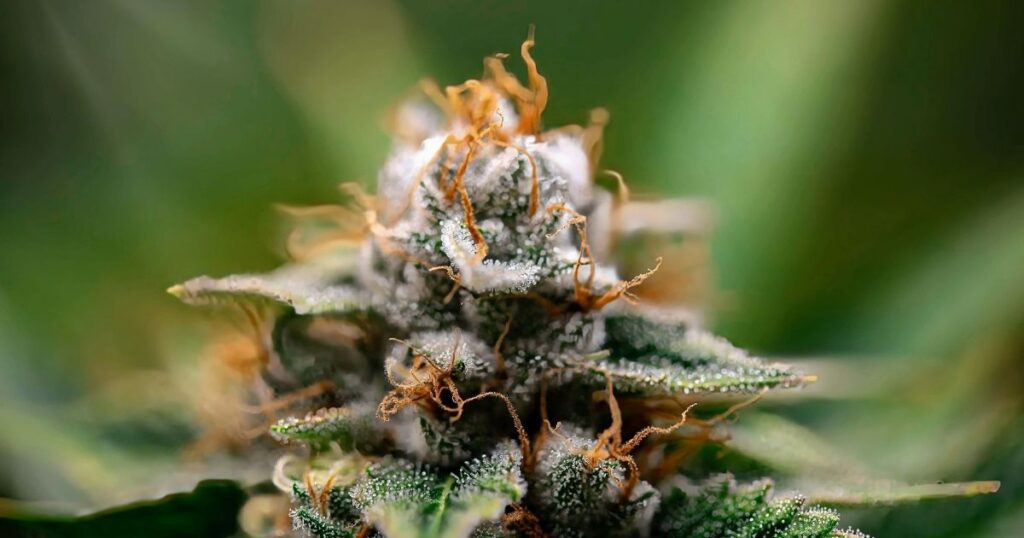
In the world of concentrates, the little details make all the difference. Live resin vs live rosin are two remarkably similar-sounding names for two concentrates that are visually quite similar. But there are key differences that separate the two, including solvent. This blog explores live resin vs live rosin carts and dives into what it means for a concentrate to be truly solventless, the Jetty way.
What Does “Solventless” Mean?
A solventless extract is one that is made through ice, water, heat, and pressure – no hydrocarbon solvents are used during the process. You may see “solvent-free” on labels of concentrates, but this is not the same thing; solvent-free refers to a finished product with no residual solvents, while solventless refers to a finished product made without any solvents.
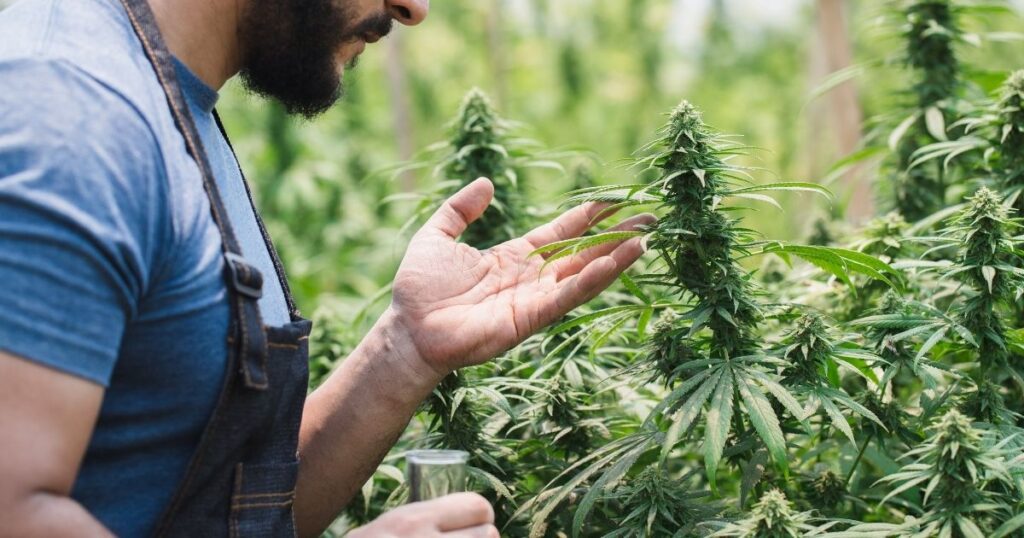
What Does “Live” Mean (Fresh-Frozen vs Cured)?
For a concentrate to be considered “live”, the flower must be fresh-frozen within hours of harvest. This key step helps preserve the unique profile of strain-specific terpenes, giving the final product a delicious and fresh flavor.
Live rosin is made from fresh-frozen flower that is processed into ice water hash and then pressed into the final live rosin product.
Cured rosin, on the other hand, is made from cannabis flower that has been dried and cured before being pressed into rosin. Allowing the flower to dry and cure changes the terpene profile slightly, both in the flower and the final product. No solvents are used for live or cured rosin.
Resin, on the other hand, is made with solvents. Live resin refers to a product that was fresh-frozen immediately after harvest, and then put through a hydrocarbon extraction process to separate the plant matter from the trichomes.
Cured rosin is made similarly, with dried and cured flower that is then put through the hydrocarbon extraction process.
Live refers to the flower being fresh-frozen within hours of harvest. Rosin refers to a product made without solvents.
Is Live Resin Solventless?
No, live resin is not solventless. Live resin is made with hydrocarbon solvents that are then purged from the product.
You can see in your COA results that live resin products have no solvents left in the product, but they are used in the product. Resin is always made with hydrocarbon extraction.
Live rosin is solventless, using manual separation through ice water hash to create the final pressed product.
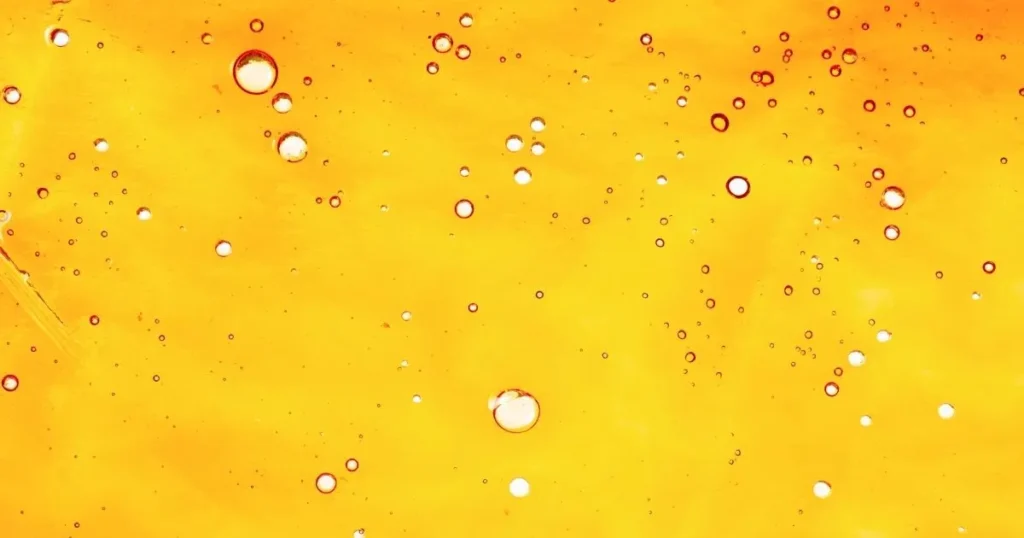
Key Differences Between Live Resin vs Live Rosin
Live rosin and live resin are similar products, with a few key differences. Both begin with fresh-frozen flower (that’s why they’re “live’) to retain the native terpenes of a specific strain, but the difference comes in how they’re processed.
Live rosin is made through manual separation of the plant material, first through ice water hash with flower that has been fresh-frozen, then pressed with heat and pressure to create the final product. Live resin is made with hydrocarbon solvents that are then removed from the product.
This difference in processing results in a few differences in the final product: rosin is often a thicker form of concentrate, while the viscosity of resin can vary. Additionally, because of the more hands-on extraction process of live rosin and the purity of the final product, it is often more expensive while live resin is usually more price-accessible.
Jetty Solventless Live Rosin: How It’s Different
Jetty’s solventless live rosin goes a step further than the rest. After the cannabis has been processed through ice water hash and then pressed into live rosin, Jetty applies an extra purification step, a completely natural filtration process that removes undesirable compounds like lipids from the live rosin. Lipids and other undesirable compounds can dull the flavor of your vape or impact the cartridge performance.
Removing them ensures a tastier vape cartridge from the time you open it to when you finish it. This step has no effect on the potency of the vape, creating a clean, consistent flavor with a potency over 80% that harnesses the entourage effect for a balanced, clean vapor feeling.
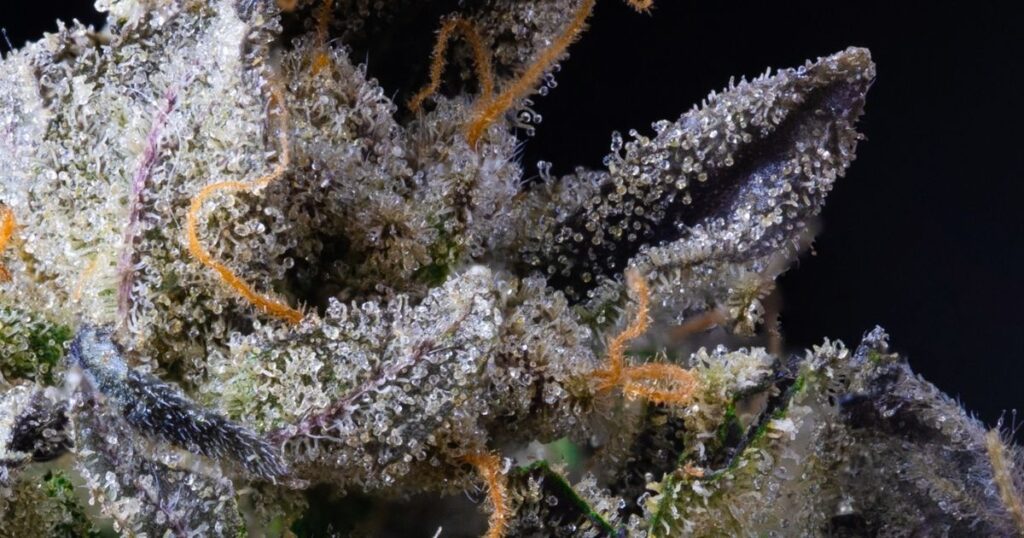
Live Rosin vs Live Resin vs Value Carts
We’ve gone over live rosin and live resin cartridges in detail, but there is also a third category: value cartridges.
Most value vape carts are made with distillate-based concentrates that have terpenes added back in for flavor and consistency. These terpenes are often botanically-derived, but sometimes come from the cannabis plant.
The flavor of these carts is reconstructed, with terpenes added after processing, rather than the native profile of the flower. Sometimes these carts don’t taste anything like their flower counterparts, which some people prefer. Value carts are potent and affordable, making them a good choice for many cannabis consumers.
All carts must undergo state testing to meet quality and safety standards, so you can tailor your preference by price, availability, and authenticity of flavor.
All carts must undergo state testing to meet quality and safety standards, so you can tailor your preference by price, availability, and authenticity of flavor.
Cannabis Concentrate Comparison chart
Jetty Live Rosin | Jetty Live Resin | Cured Rosin | Cured Resin | Distillate | |
Made from | Strain-specific fresh-frozen flower | Fresh-frozen flower | Dried flower | Dried flower | Refined THC oil |
Extraction Process | Ice water, pressure, heat, Jetty purification step | Hydrocarbon (purged + tested) | Ice water, pressure, heat | Hydrocarbon (purged + tested) | Distillation |
Solventless or solvent-free? | Solventless | Solvent-free | Solventless | Solvent-free | Solvent-free |
Potency | 80 – 85% THC | 80 – 85% THC | Varies, often high | Varies, often high | Varies, often high |
Terpenes | Native terpenes preserved from strain-specific extraction | Mostly native terpenes | Mostly native terpenes preserved from strain-specific extraction | Mostly native terpenes | Removed and new terpenes added back in |
Flavor Profile | Clean. Original strain-specific flavor | Authentic, true to the plant flavor | Cured, but often true to the plant | Cured. Sometimes true to the plant, sometimes heavily flavored | Often heavily flavored, may not taste plant-authentic |
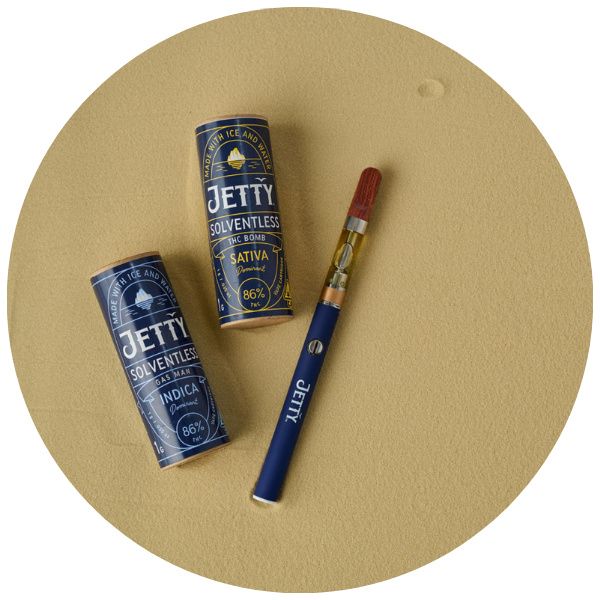
Buying & Use Tips for Live Carts
Live resin and live rosin are two great choices for cannabis consumers looking for a quick and discreet way to enjoy cannabis.
There are dozens of choices of vape cartridges at any given dispensary, so always start your search by seeking out live resin or live rosin vapes, and then narrow the selection down by the available strains.
If the purity of your vape is the most important factor, look for vapes that have a “no hydrocarbon solvents” label, or say “live rosin.” Additionally, the COA for the vape will give you a better idea of the potency and the terpene profile, so you can further tailor your cannabis preferences.
Tips for using your vapes:
- Store the vape in the upright position to keep it from leaking
- Don’t allow your vape to sit in direct sunlight or hot areas, as this can degrade the THC.
- Allow your vape to have a gentle preheat before taking a pull; this helps the battery and the quality of the concentrate.
Aim for moderate voltage on your vape cartridge to prolong the battery life and get the most flavor and potency from each hit.
FAQs: Live Resin, Live Rosin, Solventless
Is live resin solventless?
No, live resin is not solventless; it is made with hydrocarbon solvents like butane and propane that are purged from the final product. Live rosin is solventless, made through mechanical pressing of ice-water hash with heat and pressure.
Both are tested and safe for consumption, but only rosin is made without solvents.
Is Jetty Solventless Live Rosin?
Yes, Jetty Live Rosin is entirely solventless. Jetty goes beyond other vape brands with an extra purification step that is still solventless, for the best flavor and purity.
Does “solvent-free” mean solventless?
No, solvent-free is different than solventless. Solvent-free products are made with solvents that are purified from the final product, while solventless concentrates are not made with any hydrocarbon solvents.
Why do some rosin carts lose flavor?
Undesirable compounds like lipids or additives in the extraction process can affect the flavor of your vape cartridges as the heat cycles through. Jetty’s purification process is designed to stabilize your concentrate and help preserve the flavor from the first hit to the last.
Are live carts stronger than distillate?
Sometimes, but it depends. The potency of your vape cartridges, whether live or distillate, varies by brand and batch. Always read your label and COA to get an in-depth understanding of your products.
Choosing Between Live Resin and Live Rosin
There’s no right or wrong answer between live resin and live rosin; both types of concentrate offer a window into the cannabis plant at its peak, with a bold and delicious strain-specific flavor in every sip. No matter which you prefer, Jetty has the vape cartridge for you.
